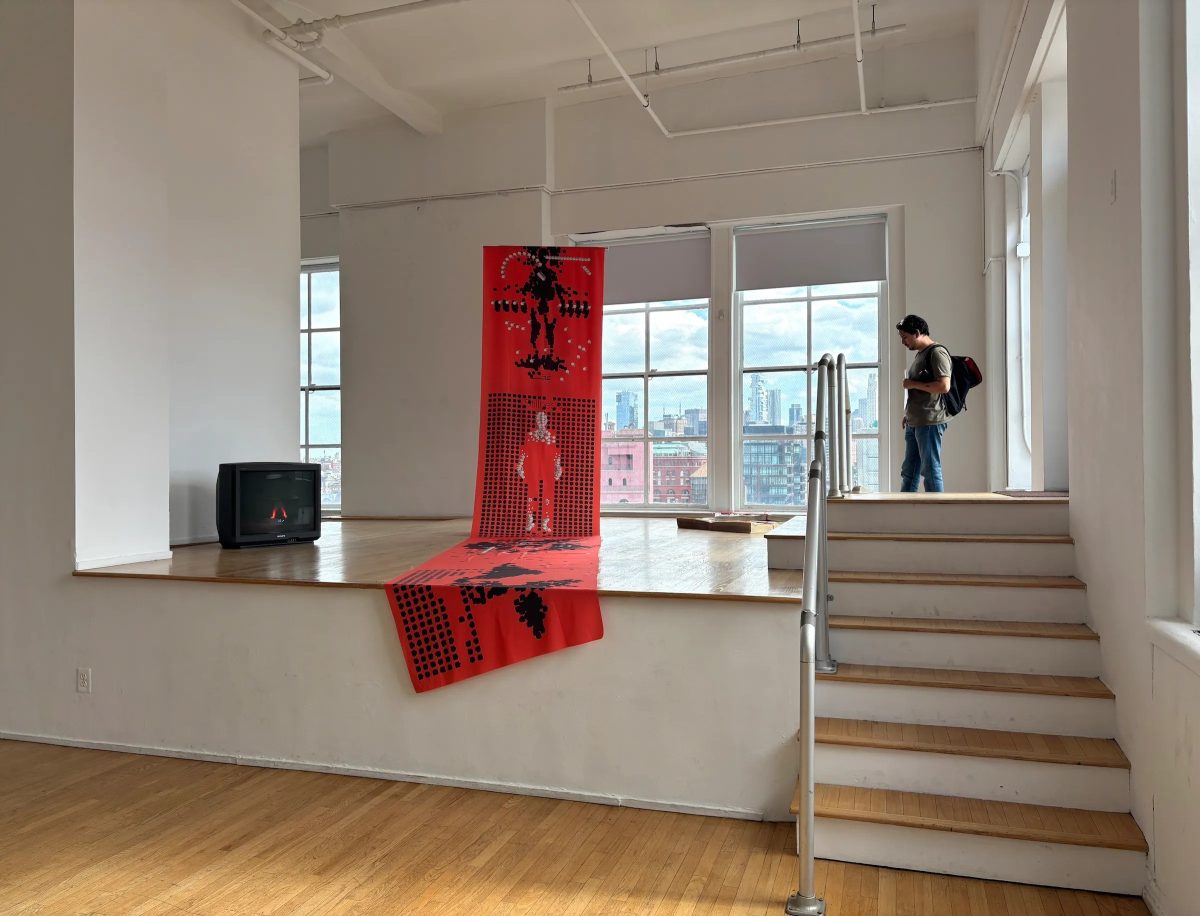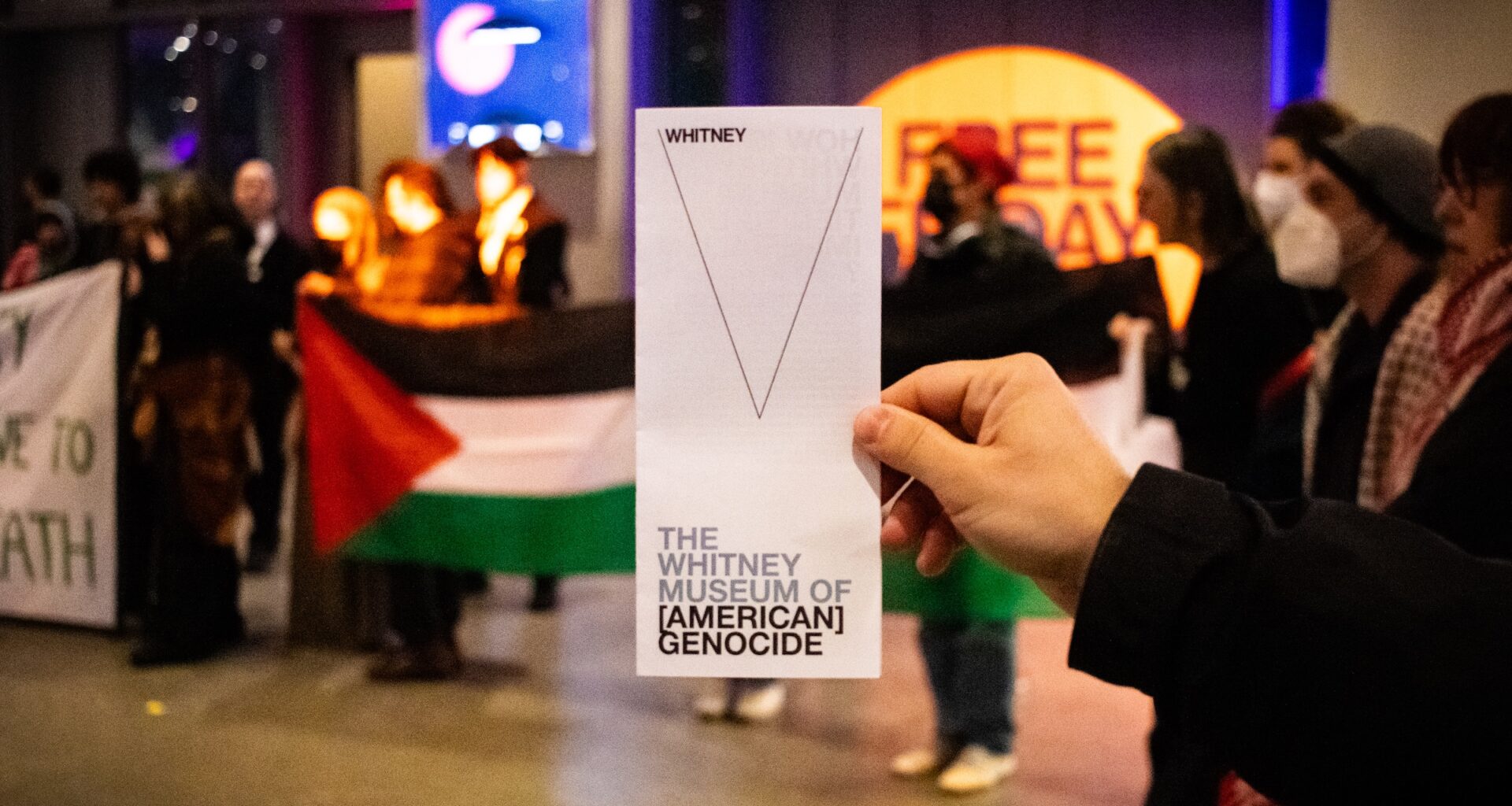On June 2, the director of the Whitney Museum, Scott Rothkopf, sent an email announcing his “suspension” of the 50-year-old Independent Study Program (ISP) to a select number of its alumni. Citing “a gap in leadership,” he officially canceled admissions for the 2025–26 cohort, which had already been inexplicably halted for two months, even after final interviews. During the same hour, I was informed that my position as Associate Director at the Whitney ISP had been “terminated.”
This came two weeks after the release of my public statement in protest of the Whitney’s cancellation of the performance “No Aesthetic Outside My Freedom: Mourning, Militancy, and Performance,” an expression of transnational solidarity with the Palestinian people that was part of the ISP curatorial show a grammar of attention. Both my dismissal and the “pause” of the ISP were the culmination of months of the museum’s combined disregard and scrutiny of the program. These actions were yet another blunt refusal to engage in dialogue, and further evidence of a consistent lack of clarity, to the point of obfuscation, regarding the future of the ISP, including the circumstances surrounding former ISP Director Gregg Bordowitz’s “demotion” on February 2. If this sounds messy and confusing, you are not alone. It is by design.
Talking about this story is painful in personal and utterly impersonal ways at the same time. I can’t help but recognize that it follows a well-worn institutional playbook. As scholar Sarah Ahmed puts it in her 2021 book Complaint!: “To complain about abuse of power is to learn about power.” Being witness to and victim of the Whitney’s actions taught me in a new way about decimated workers’ rights and increased precarity; about a pervasive corporate culture of Non-Disclosure Agreements (NDAs) that keep most of us in the dark about how often power protects itself through concealment; about recalcitrant misogyny and scapegoating; about the systemic racisms that continue to find cover in tokenism; about the ever-widening gap between overtaxed museum workers and upper management; about the conservatism of museums and their boards; and about institutions’ utter disregard for actual learning, for actual community, even for the actual value of art in the world.
While I am experiencing layered hurts and disappointment, as people invested in protecting artists and artmaking, we should not lose sight of the big picture. These acts of administrative violence are increasingly common and can be best understood in their entanglement and continuity with one another. The details of the ISP case carry damaging consequences for experimental learning spaces in museums, especially this one that has not upheld its mission statement to be “experimental, responsive, and risk-taking.”
Let me give you a bit of background about my time at the ISP. Since joining in February of 2024, my priority has been to introduce a new programming to sustain and nurture a community of artists, curators, and writers based on care, trust, and a political commitment to the inventiveness of artmaking, thinking, and writing. Our shared medium was thoughtful, open, caring, and courageous conversation. And we did have an extraordinary year at the ISP. Participants were writing zines together, collaborating, and thriving as a collective. An expanded range of 50 artists, philosophers, musicians, poets, and art historians visited the program in various capacities. In addition to the traditional seminars, we held workshops and communal meals, gathered in assemblies, and organized site visits to alternative art spaces engaged in sustainable practices. The two final shows and the Critical Symposium papers were ample proof of the caliber of the participants’ work. And yet, it is painfully clear that the beauty and promise of this artistic community have now been buried by the Whitney’s leadership, with its starkly disproportionate recourse to retaliatory institutional violence.
Despite this, and maybe because of it, I firmly believe that when we take the fullest responsibility possible, our words and actions matter now more than ever. As democratic values in the United States erode at an accelerated pace, acts of silencing and erasure at artistic and academic institutions — think of Columbia University, the Noguchi Museum, or Paramount — will continue to occur, but they cannot go unchallenged. Yet to do so effectively, we must cease to treat any of these incidents as isolated or exceptional.
 Installation view of a grammar of attention, curated by the 2025 ISP Curatorial Cohort, at the Ramscale Penthouse. Pictured: Works by Haitham Haddad (photo Valentina Di Liscia/Hyperallergic)
Installation view of a grammar of attention, curated by the 2025 ISP Curatorial Cohort, at the Ramscale Penthouse. Pictured: Works by Haitham Haddad (photo Valentina Di Liscia/Hyperallergic)
A case in point is the Whitney Museum itself, which likely supported Amy Sherald’s decision to cancel her show at the Smithsonian, and rightly so, while simultaneously censoring and even quashing the ISP for its pro-Palestinian content. The violence with which the museum counters acts of protest and demands for equality gives us the measure of the threat they pose. As Laura Raicovich put it recently in an opinion piece for Hyperallergic, “Silence is complicity, and pre-compliance is not an option.” We must urgently build on practices of solidarity that can interrupt isolationism, fear, and the retrenchment of individualism. There is strength in numbers. And this is especially true regarding the global outrage at the Palestinian genocide, confirmed by the swiftness with which pro-Palestinian speech continues to be repressed.
It will surprise no one that the cancelled performance of Palestinian mourning was also a call to pay attention to the entangled violences of settler colonialism, anti-Blackness, and Indigenous genocide. The title was borrowed from a line in late Palestinian writer Mahmoud Darwish’s 2002 poem “State of Siege.” and the piece was originally commissioned by Jewish Currents. Palestinian-American artists Fadl Fakhouri, Noel Maghathe, and Fargo Tbakhi planned to interpret a score through gestures to create a global space to mourn and resist the Palestinian genocide by connecting it, across time and space, to other colonial genocides. This bears repeating, because it is truly extraordinary: The Whitney Museum of American Art censored a performance score with texts by Natalie Diaz, Christina Sharpe, and Brandon Shimoda. Think about this for a minute.
Being part of something larger than each of us reminds us not only that we cannot go at it alone but that, in fact, we are not alone. This collective force cannot be underestimated. The ISP itself is an example of this — not only in how we grew as a community through the year, but, just as importantly, how we stood arm-in-arm and pushed back collectively on the museum’s censorship. This solidarity and the inverse of its very real power is legible in the museum’s response. The moving accumulation of several statements of dissent in solidarity, written in quick succession and amplifying one another with the force of a shared commitment, remains as a testament to this labor of community. The 2024–25 cohort is a model of what the ISP can and could be, if it abides by its critical commitments.
In the aftermath of its censorship and dissolution of the next cohort and my job, the Whitney has now set up a working group to discuss the “future” of the program. The irony, of course, is that the future of the ISP, and even its legacy, is precisely what the museum has so thoroughly compromised. Make no mistake, the Whitney Museum has suspended a space of collective thought and conviviality when it is most needed. Not because it was in crisis or not working, but because it was rich with critical and creative collective possibilities.
We know that critical thought and artistic freedom, together with experimentalism and the risk-taking they require in uncertain times, are the first thing to be shuttered, and even ridiculed, in this climate of subservience to the Trump administration and its many acts of overlapping suppression. Writers, thinkers, and artmakers working in any medium possess the means to remind everyone that things can and must be different. The labor of the imagination is, in the worst of times, essential for collective political action.
Today, there is no doubt that opposing the total violence of the Palestinian genocide is front and center of any criticality worth its name. This is a rare moment of clarity. The genocide in Gaza is an intensification and a nexus of entwined violences in a landscape of enforced complicity. Beneath its brutality lie all the trademarks of the world we live in, among them: occupation, expropriation, and extraction; racial capitalism and apartheid; coloniality and ecocide.
And this is not to instrumentalize the suffering of Gaza, but to give a value of a different order to lives lost and livelihoods shattered. It is to refuse to enter the calculations of a for-profit killing machine and, instead, to find strength and resolve in communal grief. It is to understand that mourning can become a beginning and not just an end. In fact, public mourning in the context of collective art making and earnest, impassioned study is exactly what the cancellation of “No Aesthetic Outside My Freedom” preempted.
Even after experiencing how far the Whitney was willing to go, I would and continue to do the same: offer my full and unwavering support to the censored Palestinian artists and the ISP cohort. Only by expressing dissent when it matters, by embracing the risk and uncertainty of any political action, do we become a critical mass. And we have this choice every time we speak up, think critically, or make art as practices of freedom and instruments of change and political solidarity. Only in this way will we be able to support one another while we continue to dissent and resist. Because dissent and resist we must. Together.

